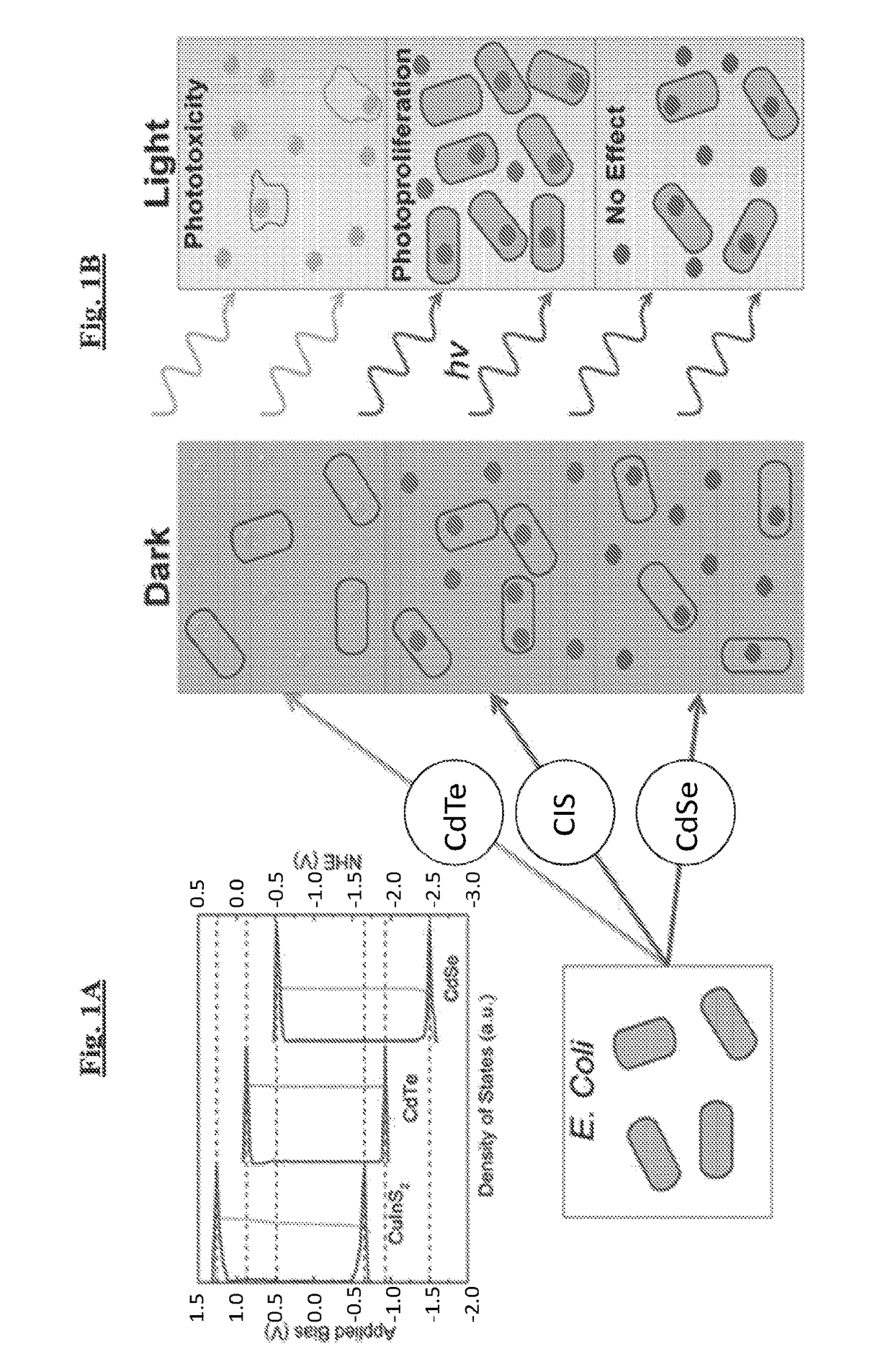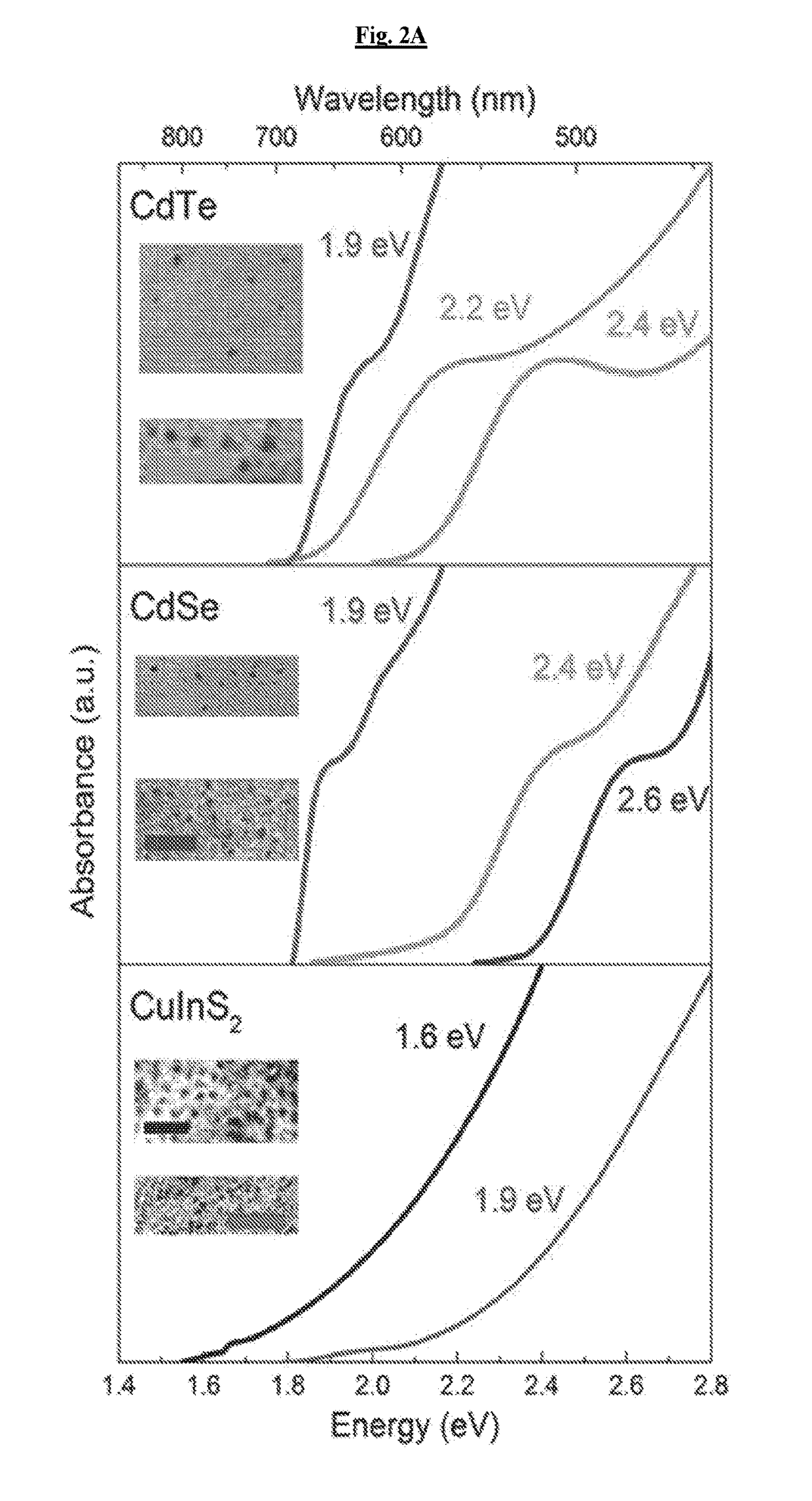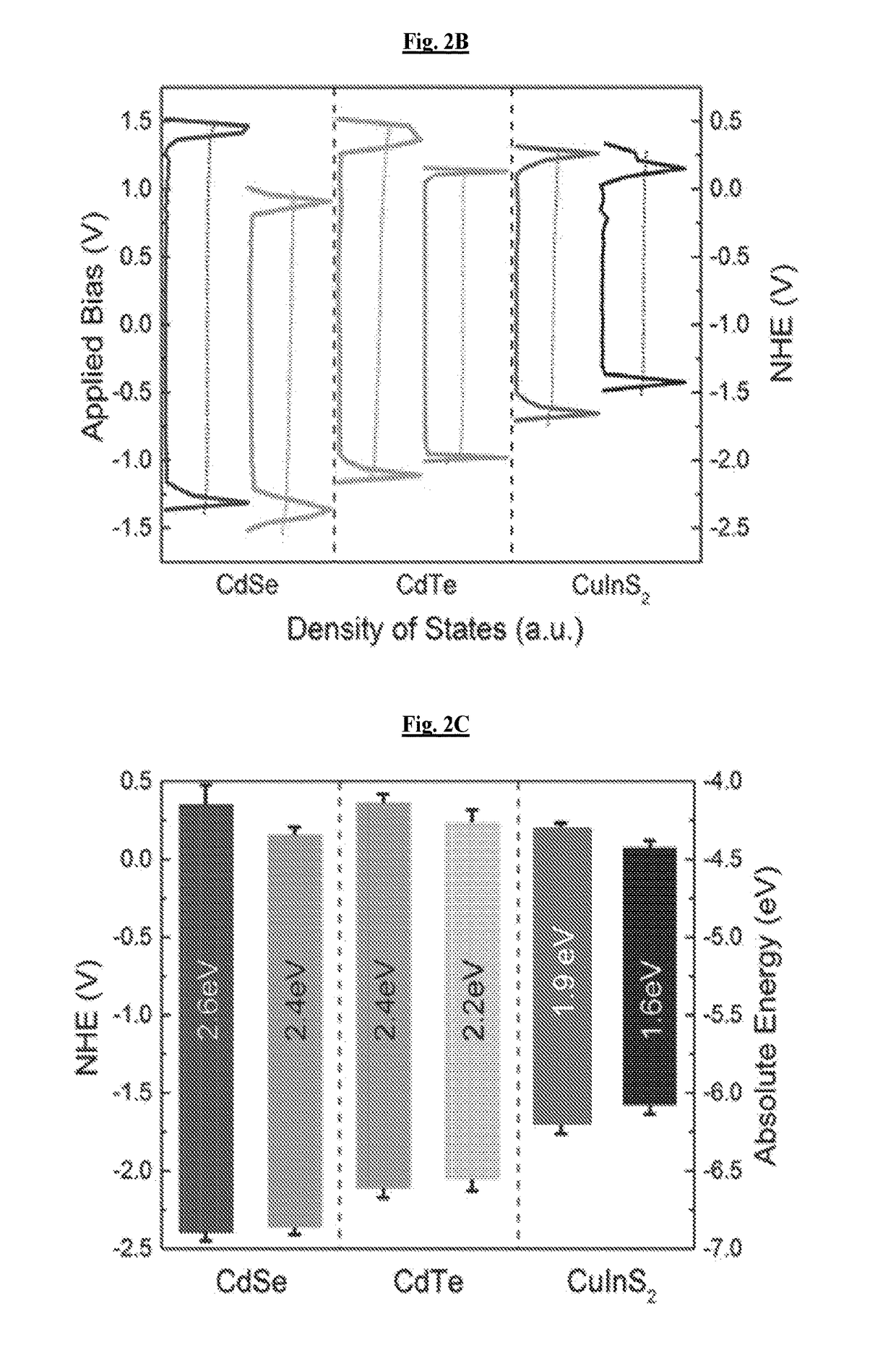Novel light-activated compositions and methods using the same
a technology of light-activated compositions and compositions, applied in the direction of antibacterial agents, bacteria material medical ingredients, therapy, etc., can solve the problems of destroying biomolecules such as dna, rna and proteins, inducing cell death by heating the surrounding medium, etc., to reduce the growth of e, reduce the oxidation potential, and the effect of the same reduction potential
- Summary
- Abstract
- Description
- Claims
- Application Information
AI Technical Summary
Benefits of technology
Problems solved by technology
Method used
Image
Examples
example 1
Characterization of Tunable Quantum Dot Properties
[0123]To examine the range of possible effects, cadmium telluride (CdTe), cadmium selenide (CdSe), and copper indium sulfide (CuInS2, CIS) QDs of different sizes, which absorb light across the visible and near-infrared spectra, were prepared (FIG. 2A). Infrared absorbing dots are highly attractive, as human tissue is generally transparent to light from 750-1000 nm allowing in vivo stimulation.
[0124]Electronic structures of these materials were quantified using scanning tunneling spectroscopy of individual nanocrystals (FIG. 2B). For clarity of comparison to biochemical systems, these measurements are compared relative to the normal hydrogen electrode potential. Based on these measurements, the band edge states of the various materials, which play the largest role in determining the redox potentials of each quantum dot, were identified. Because the samples were not perfectly mono-disperse, there was a distribution in band position for...
example 2
Photoeffect of Quantum Dots on Escherichia coli
[0125]To evaluate the photoeffect of tuned QDs in a biological environment, CdTe and CdSe of the same bandgap (2.4 eV) with varying redox potentials were selected (FIG. 2c), hereafter referred to as CdTe-2.4 and CdSe-2.4, respectively. 1.9 eV bandgap CIS particles (FIG. 2C, hereafter referred to as CIS-1.9) were also evaluated, because they have the same reduction potential as the CdSe-2.4 particle and a lower oxidation potential than CdSe-2.4 and CdTe-2.4 along with a smaller bandgap. The comparison of CdSe-2.4 to CdTe-2.4 allowed for a direct observation of the effect of the redox potentials as opposed to the bandgap. The comparison of CIS-1.9 to CdSe-2.4 allows for direct observation of the effect of the oxidation potential as the reduction potential is the same for both particles.
[0126]QDs were added, in varying concentrations, to E. coli cultures and grown rich media while the optical density was monitored using a microplate reade...
example 3
Confirming E. coli Response is Non-Material Dependent
[0131]To observe fine changes in redox potential, various sizes of the three materials were examined to confirm that these were not material dependent properties. The focus was on two CdTe particles, CdTe-2.3 with a bandgap of 2.3 eV and CdTe-2.2 with a bandgap of 2.2 eV. A higher energy CdSe particle with a bandgap of 2.6 eV and a lower energy CIS particle with a bandgap of 1.6 eV, hereafter referred to as CdSe-2.6 and CIS-1.6, respectively, were analyzed as well. CdTe materials showed decrease in the phototoxic effect with decreasing reduction potential (FIG. 4). As the bandgaps changed with increasing size, their reduction potentials moved closer to those of CdSe-2.4, implying that in certain embodiments the conduction band states relate to the phototoxic effect, given the consistency in valence band position (FIG. 2C). This data further precludes the suggestion that phototoxicity is arising from degradation of the QDs, as the ...
PUM
| Property | Measurement | Unit |
|---|---|---|
| reduction potential | aaaaa | aaaaa |
| reduction potential | aaaaa | aaaaa |
| reduction potential | aaaaa | aaaaa |
Abstract
Description
Claims
Application Information
 Login to View More
Login to View More - R&D
- Intellectual Property
- Life Sciences
- Materials
- Tech Scout
- Unparalleled Data Quality
- Higher Quality Content
- 60% Fewer Hallucinations
Browse by: Latest US Patents, China's latest patents, Technical Efficacy Thesaurus, Application Domain, Technology Topic, Popular Technical Reports.
© 2025 PatSnap. All rights reserved.Legal|Privacy policy|Modern Slavery Act Transparency Statement|Sitemap|About US| Contact US: help@patsnap.com



